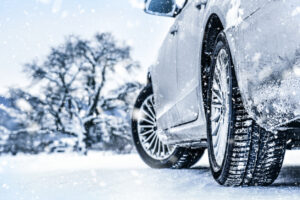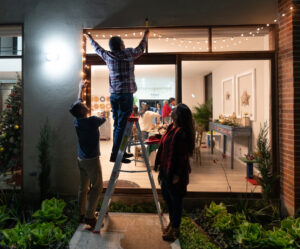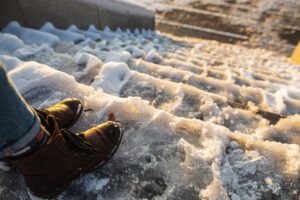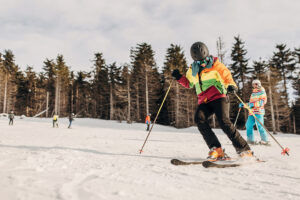Abdominal CT Scan with Contrast: What It Is and How It Works
February 29, 2024
Read More
Tis’ the season for hanging colorful lights and decorations. The season for driving to visit friends and family. The season for winter sports, and for seasonal holiday injuries. What is the number one cause of winter accidents? Well, it depends who you ask. The U.S. Consumer Product Safety Commission (CPSC) found that around 15,000 people visit emergency departments every November and December because of holiday accidents and mishaps.
Whether you’re having festive celebrations or dealing with downsides of winter, keep in mind ways to avoid seasonal holiday injuries.
About 30% of Canadian vehicle collisions occur on wet, snowy or icy roads, according to the RCMP, and in December and January, insurance providers typically see a 49% increase in collision-related claims. Snow and icy roads can reduce friction on roadways, affecting vehicle maneuverability, and weather conditions can also reduce visibility. In the U.S., snow, slush or icy conditions lead to more than 1,300 deaths and 116,800 injuries from vehicle accidents, according to the U.S. Department of Transportation, Federal Highway Administration.

During the holidays, “a combination of congested parking lots and slippery conditions make accidents more likely to happen,” said Ryan Katchky, MD, a pediatric orthopaedic surgeon and Assistant Professor of Surgery at Western University, in London, ON. “It tends to be a busy time for everybody. Often, people are in a rush.”
Tip: To avoid holiday accidents, drive more slowly and avoid consuming alcoholic beverages if you are going to be behind the wheel.
Drive through any residential neighborhood this month and you’ll see homes lit up with elaborate designs, but hanging those lights can be hazardous. Seasonal holiday injuries occur when people fall off ladders while hanging up lights and decorations. This could be in the interior of the house when decorating a Christmas tree or affixing mistletoe. It can also happen outdoors, stringing lights on the house or trees.

Katchky has personally seen those ladder injuries when working in emergency departments during holiday seasons. “People go up on ladders to hang decorations or Christmas lights. They don’t have the same experience as professionals and they can end up with serious injuries leading to pain and even disability,” he said. “Falling off a ladder can result in foot, ankle and heel fractures, usually requiring surgery. Wrist and arm fractures are common as well.”
Tip: Have someone spot you for safety, holding the ladder steady. Wear appropriate footwear and ensure the ladder base is on solid ground.
Outdoor falls are more common in winter, with icy pavement, particularly for elderly people. That’s because the aging population typically has worsening balance issues or weaker bones from osteoporosis. Falling from ice or snow, can result in broken ankles, hips, shoulders and other bones. “Hip fractures are very significant injuries for elderly patients,” according to Katchky.

Tip: Set up a support system so your elderly loves ones do not need to remove snow themselves. No matter your age, when going outside in winter conditions, walk slowly while wearing a well-fitted pair of winter shoes with good grips on the sole.
Toys are fun but can also be dangerous if not used correctly. A 2021 CPSC report estimates there were 152,000 toy-related injuries requiring emergency department treatment last year, for kids younger than 15. These can be seasonal holiday injuries that come from small toy parts, broken ornament pieces, holiday lights and batteries.

“Button batteries are very common in a lot of the newer toys,” said Katchky. “The smaller, circular batteries corrode in the esophagus and stomach and require emergency surgery to remove.”
Tip: Keep small toy parts and batteries away from young children. After opening presents, discard any trash immediately.
It’s great to hit the slopes and the rink, but injuries from winter sports like skiing, snowboarding and hockey abound.

“The most common injuries for these sports are lower leg spiral fractures, a twist injury,” Katchky said. “In children, the radius and ulna (located in the forearm) are the most common fracture sites as well. These can often be treated with a cast instead of surgery, but these seasonal holiday injuries are never fun.”
Tip: With outdoor winter sports, choose hills or an environment to match your experience level. Pay attention to icy slope conditions as well.
Vacations in cold or warm locations can still lead to holiday accidents. They may be treated while away, or when you return home. If you seek medical attention, it’s helpful to have access to any medical imaging records from abroad to share with future treating doctors when you return home. PocketHealth allows you to share a link to your imaging records with any provider treating you.
Being aware of a person’s fracture history is important in understanding and treating the current injury. “As an orthopaedic surgeon, we rely a lot on imaging,” Katchky said. “You can learn a lot about a particular injury or a child by reviewing previous imaging, particularly around previous broken bones.”
If a patient was seen at an outside emergency department or clinic first, a new X-ray may be needed, which means a repeat radiation dose that could be avoided if previous imaging studies were available. In the best case scenario, the patient provides a link to these imaging studies, which can be reviewed by the doctor or uploaded to the patient’s medical record before visiting. “It’s harder to treat a patient without that previous imaging access. If it’s a complicated injury pattern, I may start managing it and tell them we need a copy of their prior imaging,” Katchky said. “That slows down treatment and may require another doctor visit after tracking it down.”
PocketHealth allows patients to securely share medical images with treating doctors, with any device. Learn more about how PocketHealth can make it easier for your healthcare providers to treat any seasonal holiday injuries.
This post was updated in November 2023.